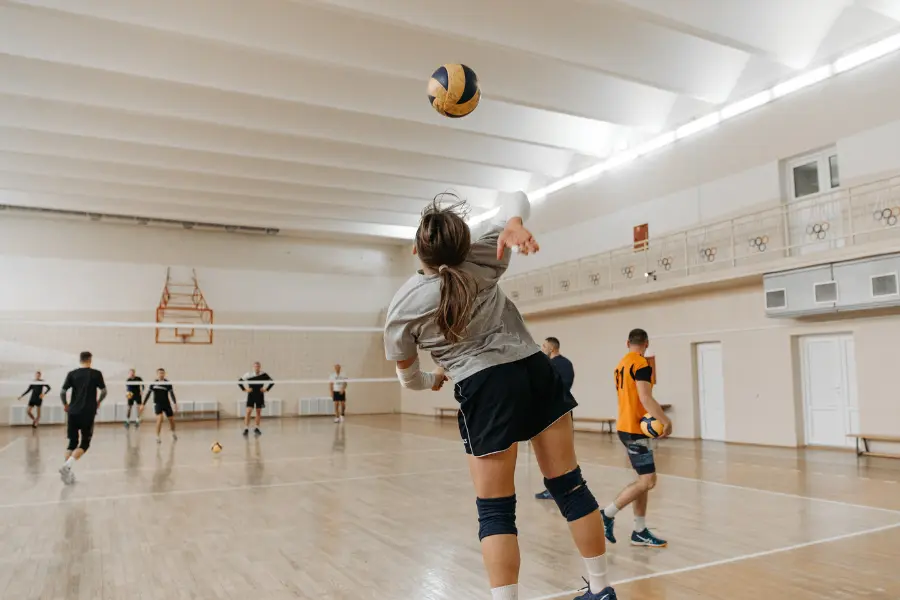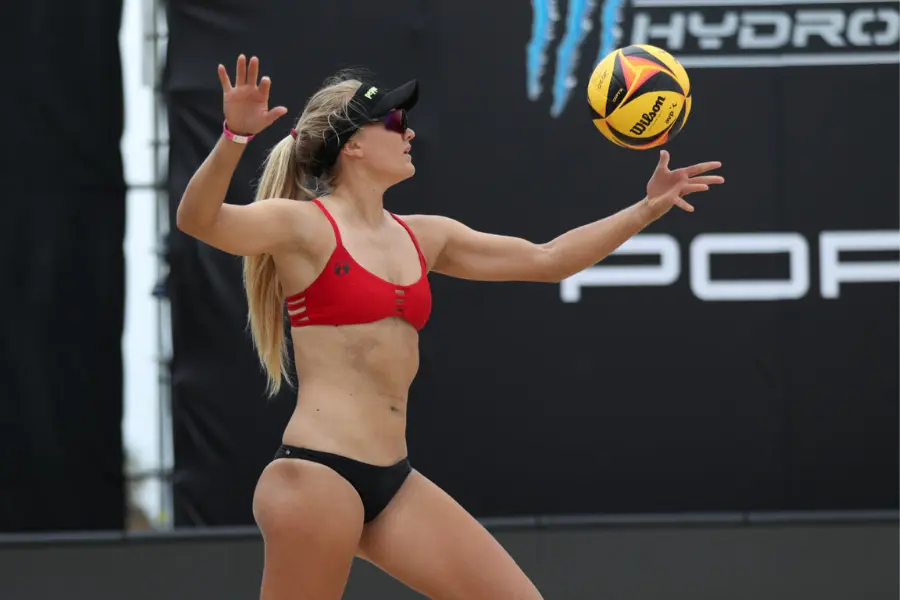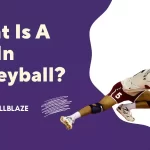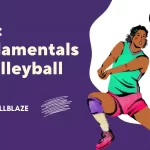Every time a volleyball rally begins, an offensive player serves the ball to the opponent. The act of serving involves hitting the ball over the net and into the opponent’s court. Below are the different rules regarding a volleyball serve.
Basic Volleyball Serving Rules

A successful serve begins with a solid understanding of the fundamentals. For fault-free service, start with the proper position, toss the ball correctly, and make contact with it within the service area.
Types of Serves

Each serving style in volleyball has its own advantages. There are a variety of serving options available to players, from traditional overhand and underhand serves to advanced jump, float, and topspin serves.
Overhand Serve Technique
Step-by-step instructions are required to master the overhand serve. The perfect execution will be guided by us from the stance to the follow-through. We will also highlight common mistakes that you should avoid.
Underhand Serve Technique
Precision is key when it comes to the underhand serve. Gain insights into achieving accuracy and power by learning the proper technique.
Jump Serve Technique
In terms of adding flair to your serve, the jump serve is a game-changer. Take your game to the next level by learning how to jump serve.
Float Serve Technique
Float serves are known for their unpredictable movements. Keep your opponents guessing by learning the secrets behind a successful float serve.
Topspin Serve Technique
Topspin serves will elevate your serving game. To increase the effectiveness of your serves, you need to understand the mechanics and techniques of adding spin.
When Do Teams Serve?
In volleyball, a serve is made every time a point is scored. When a point is scored by the serving team, the same player serves the ball. The next player in the rotation on the receiving team serves the ball if the receiving team scores.
Can You Score on a Serve?
The serving team scores a point if the receiving team fails to receive the ball on a serve. Aces are the result of such a play. Every team strives for aces, since they gain a point without having to play defense, and they are usually recorded in the box score.
Where Does Serving Happen?

An area for service is about ten feet wide and located behind the end line. It is forbidden for players to cross the end line or touch it before making contact with the ball. Otherwise, they will be called for a foot fault and a point will be awarded to their opponents.
Service Goals
Serving is all about starting a point and putting your team in position to win the rally. As much as possible, servers want to make it difficult for opposing teams to receive the ball. The ball can be served in a powerful or deceiving manner, to an empty area, or to the poorest passer on the opposing team.
Service Rules
Servants must follow the following rules:
- Play begins with a serve.
- Serves must come from within the service zone, and the back-right player makes them.
- Coin tosses determine the first service of the first set and the deciding fifth set.
- As in the previous set, the team without the first service in the second through fourth sets will serve first.
- When a player serves underhand, overhand, or by jumping, he or she can either stay on the ground or jump.
- Tosses can be allowed to hit the ground if a player does not like the way they were thrown.
- Before serving, the ball cannot be hit with two hands, tossed twice in the air, dribbled, or moved around.
- Serve the ball within eight seconds while standing behind the end line.
- The same player serves again if the serving team wins the rally.
- The ball is served by the player now in the service zone if the receiving team wins the rally.
Serving Strategies
Almost always, players hit their serves strategically. If a server targets the serving zones of the court, he or she can gain an advantage when serving. Short serves, for instance, are hits in zones 2 and 3 of the front court.
The server can make it harder to hit the ball by serving a floater. Floaters do not usually have any spin. Line serves are hits to the sideline that must be retrieved by the defense. In spite of the fact that topspin serves can be predictable, a jump topspin serve creates enough power to make receiving it difficult.
You may enjoy reading Grass Volleyball Rules
Why Does The Server Wait For The Referee To Whistle?
Whenever a play begins, the first referee must signal it. Served before the whistle blows and the referee motions for the serve, the play will be whistled dead and replayed.
As a result, the game flows more smoothly and is more consistent. During timeouts, substitutions, or some other distraction, you may have a timeout called. When the referee signals the server to begin the next rally, both teams must be ready to play.
Do I Have To Serve With One Hand?

The actual rule is to throw the ball and then strike it with one hand or any part of the arm after it has been released from the hands.
It is common for people to assume that underhand serves are illegal after reading or hearing that rule because good players don’t typically throw an underhand serve. Underhand servers let the ball drop slightly before making contact with their serving hand, if you watch carefully. In other words, it is legal to serve underhand.
What Would Happen If Someone Served Out Of Order?
The point and possession of the serve will be given to your opponents if the wrong player serves because it’s not their turn. Every player is responsible for keeping track of whose serve is whose and for knowing when their turn is to serve in the event of substitutions.
FAQs
How can I improve my serving accuracy?
Regularly practice serving drills and pay attention to proper technique.
What is the best serve for a beginner to learn?
Beginners often recommend the underhand serve due to its simplicity.
How do I handle nerves during crucial serves?
Stay calm under pressure by practicing mindfulness techniques and focusing on your breathing.
Can I use a jump serve in beach volleyball?
Jump serves are allowed in beach volleyball, and they can be powerful weapons.
Is there a specific serving strategy for a tied game?
Take advantage of your opponent’s weaknesses by analyzing them.
Conclusion
As a result, mastering volleyball serving requires an understanding of rules, perfecting techniques, and strategizing effectively.
The incorporation of these elements into your game can improve your serving prowess and contribute significantly to the success of your team, regardless of whether you are a beginner or an experienced player.
You may enjoy reading Can You Touch the Net in Volleyball?





